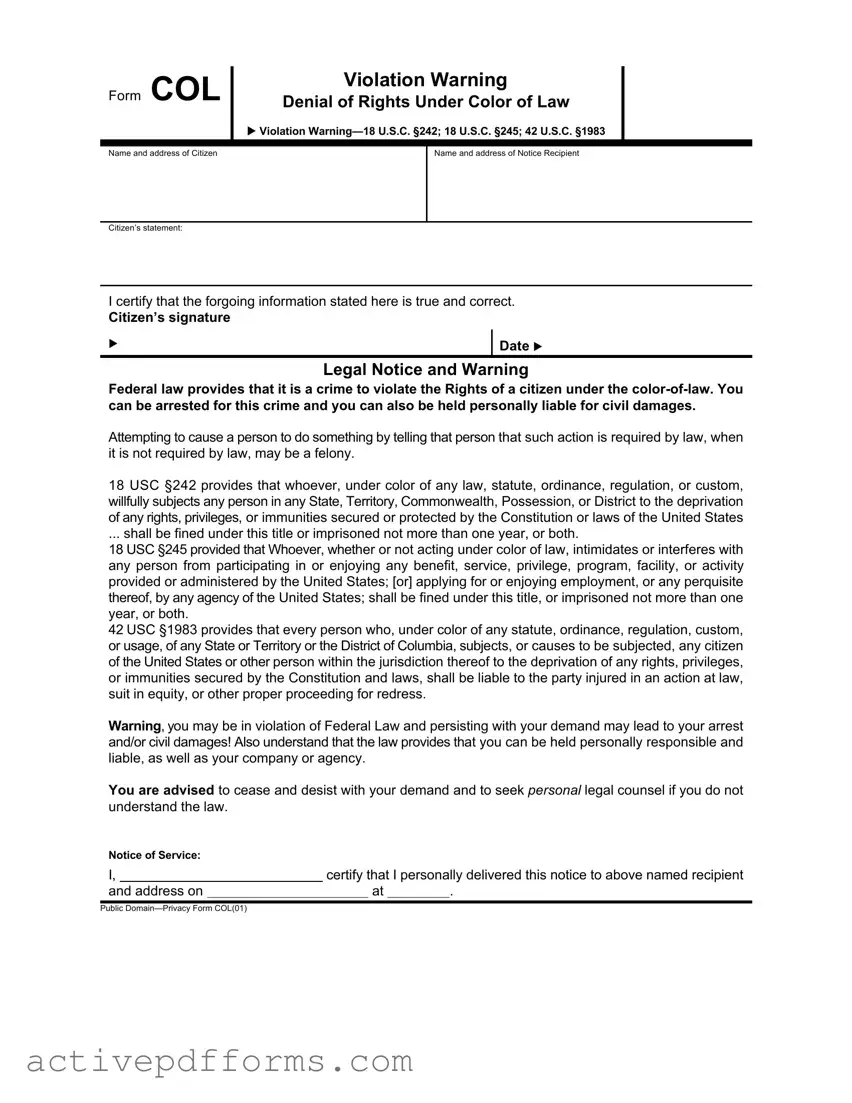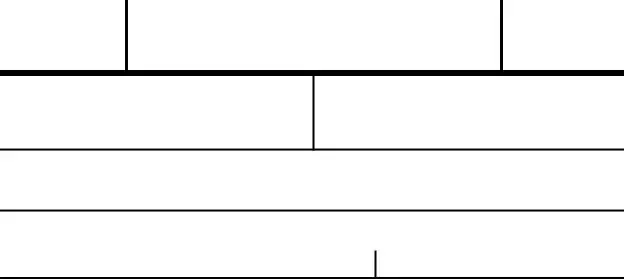Legal Notice and Warning
Federal law provides that it is a crime to violate the Rights of a citizen under the color-of-law. You can be arrested for this crime and you can also be held personally liable for civil damages.
Attempting to cause a person to do something by telling that person that such action is required by law, when it is not required by law, may be a felony.
18 USC §242 provides that whoever, under color of any law, statute, ordinance, regulation, or custom, willfully subjects any person in any State, Territory, Commonwealth, Possession, or District to the deprivation of any rights, privileges, or immunities secured or protected by the Constitution or laws of the United States
... shall be fined under this title or imprisoned not more than one year, or both.
18 USC §245 provided that Whoever, whether or not acting under color of law, intimidates or interferes with any person from participating in or enjoying any benefit, service, privilege, program, facility, or activity provided or administered by the United States; [or] applying for or enjoying employment, or any perquisite thereof, by any agency of the United States; shall be fined under this title, or imprisoned not more than one year, or both.
42 USC §1983 provides that every person who, under color of any statute, ordinance, regulation, custom, or usage, of any State or Territory or the District of Columbia, subjects, or causes to be subjected, any citizen of the United States or other person within the jurisdiction thereof to the deprivation of any rights, privileges, or immunities secured by the Constitution and laws, shall be liable to the party injured in an action at law, suit in equity, or other proper proceeding for redress.
Warning, you may be in violation of Federal Law and persisting with your demand may lead to your arrest and/or civil damages! Also understand that the law provides that you can be held personally responsible and liable, as well as your company or agency.
You are advised to cease and desist with your demand and to seek personal legal counsel if you do not understand the law.
Notice of Service: |
|
|
|
|
I, |
|
certify that I personally delivered this notice to above named recipient |
and address on |
|
at |
. |
|
|
|
|
|
|
|

